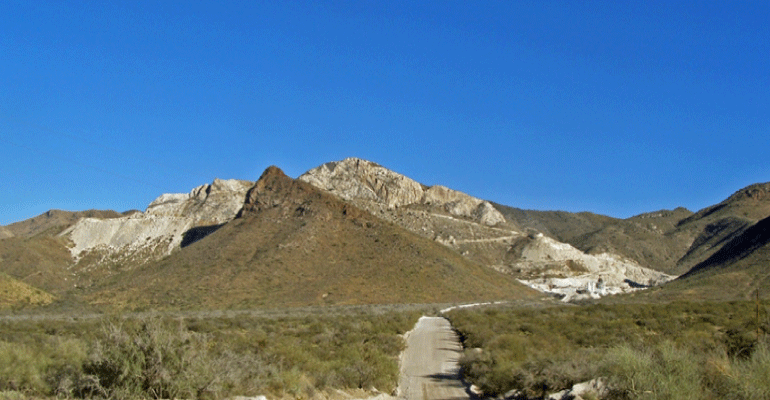
If you have lived in the Tucson area for a while, I’m sure many of you have seen the “white scar” that is located along the western flank of the Santa Rita Mountains.
Many have attributed this landmark to a marble quarry located at the site. But is this really the case? Upon closer examination, disturbed areas resulting from quarrying operations are only restricted to the northern and southern portions of this prominent landmark. The remainder is represented by a large, natural cliff face of white marble.
When viewed from the north from an area around Corona de Tucson, most of the visible “scar” is represented by mine workings, which are located high on the north facing ridge line.
However, if viewed from the west from an area around Green Valley or Sahaurita, much of this visible landmark is actually a large, natural cliff face. Quarrying operations and processing facilities located at the southern end of this landmark are situated low on the ridge and within a wash, where they are largely hidden from public view.
The white marble exposures at this locality are a part of the Mississippian Escabrosa Limestone, a thick-bedded to massive, fossiliferous, limestone, which was deposited in an ancient sea approximately 360 to 317 million years ago. About 50 to 65 million years ago, a large body of magma was emplaced within these sedimentary rocks.
Thermal metamorphism resulting from this intrusive activity, recrystallized the limestone to produce a very pure, coarsely crystalline marble. The Santa Rita quarry has been intermittently mined since 1972. It produces a number of products, including decorative aquarium and landscape rock, calcium supplement used in animal feed, filler in paint, drywall and drywall plaster, white stripes on athletic fields and fire retardant.
Visible for many miles along the western slope of the Santa Rita Mountains, this prominent landmark reminded the first Spanish missionaries to visit the Santa Cruz River Valley of Saint Rita of Cascia (1381-1457), an Italian nun, who bore a small wound on her forehead. The Santa Rita Mountains were named in honor of this religious figure.
Copyright © (2016) by David F. Briggs. Reprint is permitted only if the credit of authorship is provided and linked back to the source.
